Welcome to the second part of my Osaka series. This piece will cover one of the most popular areas in Osaka: Dotonbori!
Dotonbori and the surrounding areas like Ebisubashi and Amerikamura (American Village) are some of the most visited and popular shopping areas in Osaka.
The picture above shows the center point of the area, a Time’s Square of Osaka of sorts. The large sign of the woman running on the blue track has been a cultural landmark of Osaka since its erection in 1935 by the Glico company. Anything advertising Osaka will have that image of the “running man.” When I visited, it was a woman, so that’s a little different and actually really cool.
For the rest of Dotonbori…
Behold the glory of LED lights and Japanese eccentricity!
My first time in Osaka was the first moment since my nightly jaunts through Tokyo, at JET Orientation, that I felt I saw stereotypical Japan…and I loved it!
Dotonbori is often chosen as the symbol of Osaka and features an endless supply of restaurants and entertainment. One of the most common symbols is a Tako, or octopus. Here’s a little history for you: in 1935 a man named Tomekichi Endo, credited with the invention of Takoyaki, began popularizing it throughout Osaka. Today, I would challenge you to go anywhere and not be able to find some fried octopus balls.
You could find any kind of shop here from luxury french bath products to GAP brand clothing. Even the street food is just as varied, ranging from Belgian waffles or ice cream filled crepes, to corn dogs and Takoyaki.
It’s a very diverse place, yet the coolest spot for me was the hidden away Hozen-ji Temple. Located near the eastern end of Dotonbori street, Hozenji Temple sits idly while tourists and locals alike bypass it every day. Unbeknownst to many, an incredible Japanese icon, via literature and pop culture, rests within the temple. The moss covered Buddha centered inside the temple has resided there since the 17th century and the founding of the first street south of the canal.
When we visited at night, there were men burning incense and wood around the statue, which created a very ethereal vibe around the temple. I think it is that and the fact that this temple is literally hidden in between all the lights and buildings of modern Osaka that the temple is such a gem for anyone to visit.
Oh, there’s also a cat!
How to get to Dotonbori and Namba Square: In order to get to these famous areas I highly recommend using Google maps or a regular map to navigate the streets. However; as far as subway stations go, Nipponbashi station can take you to the center of the district and Namba Station will get you to the most southern point where you can then work your way up, while Shinsaibashi will take you a very northern part near Amerikamura.
AMERIKAMURA: In addition to the shopping streets of Dotonbori, I recommend visiting Amerikamura, an “American” themed foreigner district in the northern portion of the area. It is quite surreal to see that American culture is symbolized by towering Uncle Sam statues, fast food chains, and of course, the statue of liberty 😛
Regardless of the touristy vibe in the area, Amerikamura is a fun place with a very young feel to it. Bars, cafes, and foreigners from around the world line the streets around the area Triangle Park (where Uncle Sam is) and can be a quick reprieve from feeling like the only gaijin (foreigner) in the world.
This is also probably one of the few places you can visit a mall with a massive white pumpkin and chill out to reggae on the streets.
However, for me, the best thing about Amerikamura and Dotonbori is the almost 100% authentic Mexican restaurant named El Pancho.
El Pancho restaurant is amazing. Period.
Traveling the world and growing up in the Southwest United States is a terrible combination. I learned very quickly that I will almost NEVER find “real” Mexican food outside of the Americas. You can get quite desperate.
Luckily, another JET here in Nara has visited the place before and organized a dinner for a few of us; I am so incredibly grateful! It may not have been 100% authentic, (there were some interesting additions to the food), but it was the closest I’ve ever gotten in any country I’ve been to outside of the Americas.
I ordered an amazing chicken burrito platter and king-sized guava margarita for 1,700 and 1,000 yen, respectively. It’s kind of pricey but worth it.
The restaurant is found a little bit south from Shinsaibashi subway station. You have to look carefully because it is not on the first floor but instead on the rooftop of a long sky scraper. Once you reach the ground floor, you take a small elevator to the rooftop restaurant and are welcomed by cacti and the Mexican flag.
The rest of the restaurant is just as ornately decorated with Latin American paraphernalia and knick knacks littered across the walls. At one point I almost felt like I was back home in Tucson, AZ at Guadalajara Grill.
It’s a little pricey, but like I said worth it. The environment, the service, and the food absolutely make up for the cost. I promise you, after 1 month of onigiri, ramen, and fried Japanese food, I would’ve paid far more for a burrito. Essentially I didn’t even need to know how much the check was; I was too happy.
If you’re interested in checking out Dotonbori or El pancho or any of the other areas I recommend looking at TripAdvisor and other review sites and sculpting your own tour; have fun!




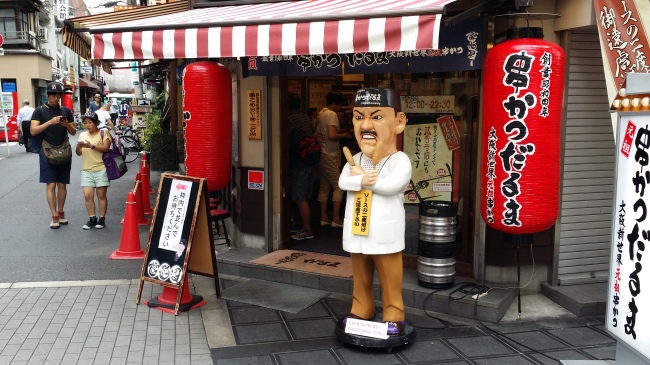




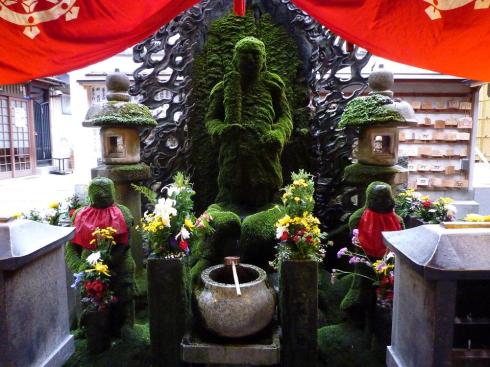








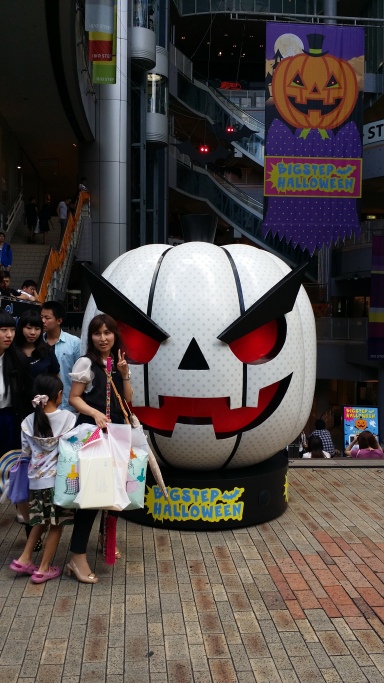






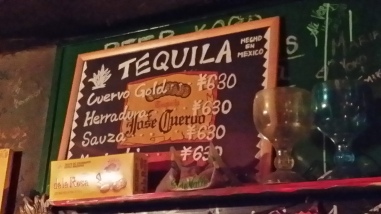

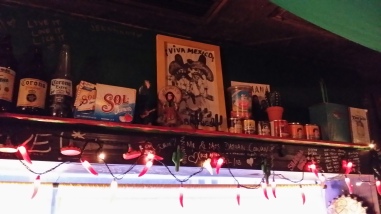




1 comment ›